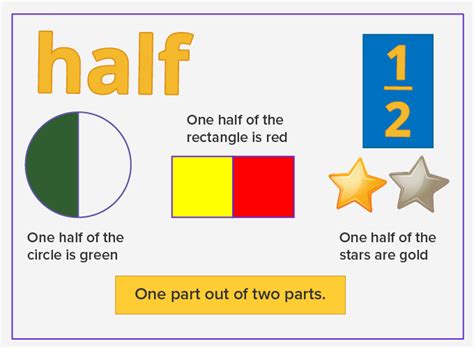What Is Half Of 2 1/3
News Co
Apr 01, 2025 · 4 min read

Table of Contents
What is Half of 2 1/3? A Comprehensive Guide to Fraction Division
The question, "What is half of 2 1/3?" might seem simple at first glance. However, it delves into the fundamental concepts of fractions and division, offering a valuable opportunity to explore various mathematical approaches and solidify your understanding of these core arithmetic principles. This comprehensive guide will not only answer the question directly but also explore the underlying concepts, providing you with a robust understanding of how to tackle similar problems.
Understanding Fractions: A Refresher
Before diving into the calculation, let's refresh our understanding of fractions. A fraction represents a part of a whole. It's composed of two key components:
- Numerator: The top number, indicating the number of parts we have.
- Denominator: The bottom number, indicating the total number of equal parts the whole is divided into.
For example, in the fraction 1/2, the numerator (1) represents one part, and the denominator (2) indicates that the whole is divided into two equal parts.
Converting Mixed Numbers to Improper Fractions
The number 2 1/3 is a mixed number – a combination of a whole number (2) and a fraction (1/3). To perform calculations more easily, it's often beneficial to convert mixed numbers into improper fractions. An improper fraction has a numerator larger than or equal to its denominator.
Here's how to convert 2 1/3 to an improper fraction:
- Multiply the whole number by the denominator: 2 * 3 = 6
- Add the numerator to the result: 6 + 1 = 7
- Keep the same denominator: 3
Therefore, 2 1/3 is equivalent to the improper fraction 7/3.
Finding Half: Division with Fractions
Finding half of a number is equivalent to dividing it by 2. When dealing with fractions, division involves multiplying by the reciprocal. The reciprocal of a fraction is obtained by swapping its numerator and denominator. The reciprocal of 2 (which can be written as 2/1) is 1/2.
So, to find half of 7/3, we multiply 7/3 by 1/2:
(7/3) * (1/2) = (7 * 1) / (3 * 2) = 7/6
Converting Improper Fractions Back to Mixed Numbers
The result, 7/6, is an improper fraction. To express it as a mixed number (a more easily understandable form), we perform the division:
7 ÷ 6 = 1 with a remainder of 1.
This means that 7/6 is equal to 1 whole and 1/6 remaining. Therefore, the mixed number representation is 1 1/6.
Therefore, half of 2 1/3 is 1 1/6.
Alternative Methods: A Step-by-Step Approach
Let's explore alternative methods to arrive at the same solution, reinforcing the underlying concepts.
Method 1: Halving the Whole Number and the Fraction Separately
We can split 2 1/3 into its whole number (2) and fractional (1/3) parts.
- Half of 2: 2 / 2 = 1
- Half of 1/3: (1/3) / 2 = (1/3) * (1/2) = 1/6
Adding the two halves together: 1 + 1/6 = 1 1/6
Method 2: Decimal Conversion (Approximation)
While not as precise, converting the mixed number to a decimal can provide an approximate solution.
- Convert 2 1/3 to a decimal: 2 + (1/3) ≈ 2.333
- Find half of the decimal: 2.333 / 2 ≈ 1.1665
This decimal approximation is close to our calculated fraction 1 1/6 (approximately 1.1667). Note that this method introduces a small degree of error due to the repeating decimal nature of 1/3.
Real-World Applications: Understanding the Practical Significance
Understanding fraction division is crucial in many real-world scenarios. Consider these examples:
- Baking: If a recipe calls for 2 1/3 cups of flour and you want to halve the recipe, you'll need 1 1/6 cups of flour.
- Construction: Dividing lengths of materials accurately requires working with fractions.
- Sewing: Calculating fabric requirements often involves fractional measurements.
- Finance: Dividing shares or portions of investments involves similar calculations.
Mastering these fractional operations ensures accuracy and efficiency in various tasks.
Expanding Your Knowledge: Further Exploration of Fraction Operations
This problem provides a springboard to further explore the fascinating world of fractions. Consider deepening your understanding by:
- Practicing more complex fraction problems: Try finding a third of 2 1/3, or other combinations of fractions and whole numbers.
- Exploring different methods of fraction simplification: Learn how to reduce fractions to their simplest forms.
- Investigating fraction multiplication and addition/subtraction: These operations are fundamental to mastering all fraction-based calculations.
- Using online fraction calculators: These tools can help verify your calculations and provide visual representations of the operations. (Note: While beneficial for verification, it's crucial to understand the underlying mathematical principles to develop your skills.)
Conclusion: Mastering Fractions for Everyday Life
The seemingly simple question of finding half of 2 1/3 unveils a wealth of mathematical principles. By understanding fraction conversion, division, and simplification, you equip yourself with practical skills applicable to a wide range of situations. The ability to confidently tackle these calculations empowers you to approach real-world problems with precision and accuracy, making you a more capable and informed individual. Remember to practice regularly and explore different approaches to solidify your understanding of fractions. With consistent effort, mastering fractions will become second nature, making even complex calculations manageable and intuitive.
Latest Posts
Related Post
Thank you for visiting our website which covers about What Is Half Of 2 1/3 . We hope the information provided has been useful to you. Feel free to contact us if you have any questions or need further assistance. See you next time and don't miss to bookmark.